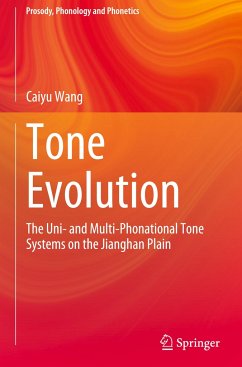This book provides a start of defining the uni- and multi-phonational tone systems of geographically-connected dialects under a phonation-pitch tonal model. It also demonstrates an interpretation of the contemporary ongoing tonal variations and varieties from the perspective of language evolution. Acoustic data are collected from five adjacent counties on the Jianghan Plain in China, where two varieties of Southwestern Mandarin and one variety of Gan Dialect are spoken. Falsetto and breathy phonations are applied in this area for phonological distinction, and thus the modal-only dialects co-occur with the di-phonational (falsetto and modal) and tri-phonational (falsetto, modal, and breathy) ones. The acoustic and perceptual analyses are conducted to define tones under the Multi-Register Four-Level Tonal Model, a frame considering both pitch and phonation for the definition of tones. The synchronic variations and varieties within and across speakers/dialects are interpreted in the dynamic interplay of tones mainly governed by phonetic and phonological reasons. The inner-system tonal differences of individual dialectal varieties together with the general distributive patterns of tones in this area are evaluated to determine the paths of tone evolution.
Fresh for it exploring the definition and linguistic meaning of the dynamic modal- and non-modal tones, the book benefits researchers with data, research methods, and insight and helps the language teachers and learners understand and learn tones with what the lexical tones really are. The book is also written for the readers curious of tones and tone languages.
Fresh for it exploring the definition and linguistic meaning of the dynamic modal- and non-modal tones, the book benefits researchers with data, research methods, and insight and helps the language teachers and learners understand and learn tones with what the lexical tones really are. The book is also written for the readers curious of tones and tone languages.








